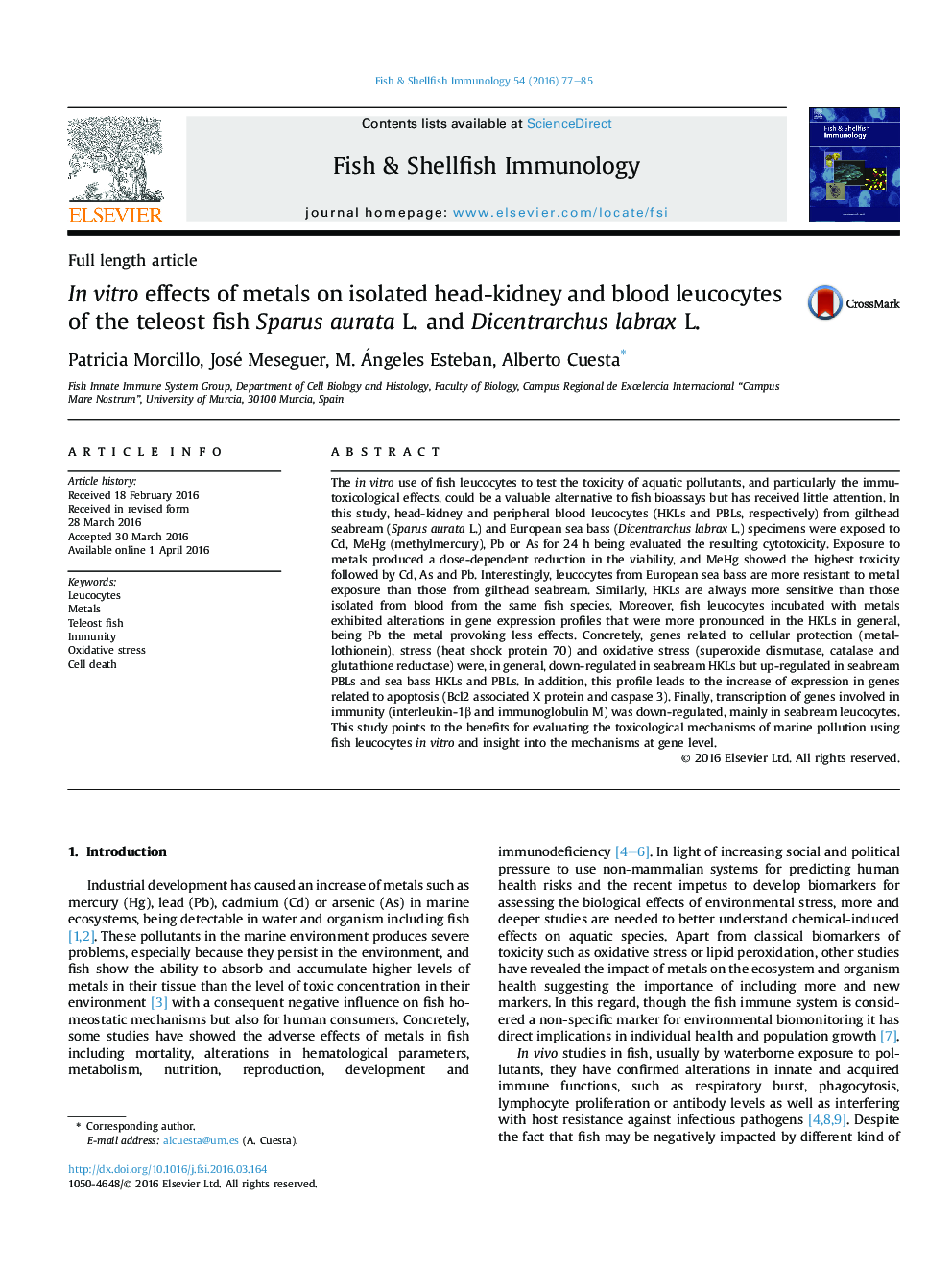| Article ID | Journal | Published Year | Pages | File Type |
|---|---|---|---|---|
| 2430601 | Fish & Shellfish Immunology | 2016 | 9 Pages |
•In vitro cytotoxicity of metals to seabream and sea bass leucocytes follows the order of MeHg > Cd > As > Pb.•Sea bass leucocytes are more resistant to metals than seabream leucocytes. PBLs also more resistant than HKLs.•Leucocytes show alteration of oxidative stress and cellular protection leading to apoptosis.•Metals down-regulated the expression of immune-relevant genes in vitro.
The in vitro use of fish leucocytes to test the toxicity of aquatic pollutants, and particularly the immutoxicological effects, could be a valuable alternative to fish bioassays but has received little attention. In this study, head-kidney and peripheral blood leucocytes (HKLs and PBLs, respectively) from gilthead seabream (Sparus aurata L.) and European sea bass (Dicentrarchus labrax L.) specimens were exposed to Cd, MeHg (methylmercury), Pb or As for 24 h being evaluated the resulting cytotoxicity. Exposure to metals produced a dose-dependent reduction in the viability, and MeHg showed the highest toxicity followed by Cd, As and Pb. Interestingly, leucocytes from European sea bass are more resistant to metal exposure than those from gilthead seabream. Similarly, HKLs are always more sensitive than those isolated from blood from the same fish species. Moreover, fish leucocytes incubated with metals exhibited alterations in gene expression profiles that were more pronounced in the HKLs in general, being Pb the metal provoking less effects. Concretely, genes related to cellular protection (metallothionein), stress (heat shock protein 70) and oxidative stress (superoxide dismutase, catalase and glutathione reductase) were, in general, down-regulated in seabream HKLs but up-regulated in seabream PBLs and sea bass HKLs and PBLs. In addition, this profile leads to the increase of expression in genes related to apoptosis (Bcl2 associated X protein and caspase 3). Finally, transcription of genes involved in immunity (interleukin-1β and immunoglobulin M) was down-regulated, mainly in seabream leucocytes. This study points to the benefits for evaluating the toxicological mechanisms of marine pollution using fish leucocytes in vitro and insight into the mechanisms at gene level.
